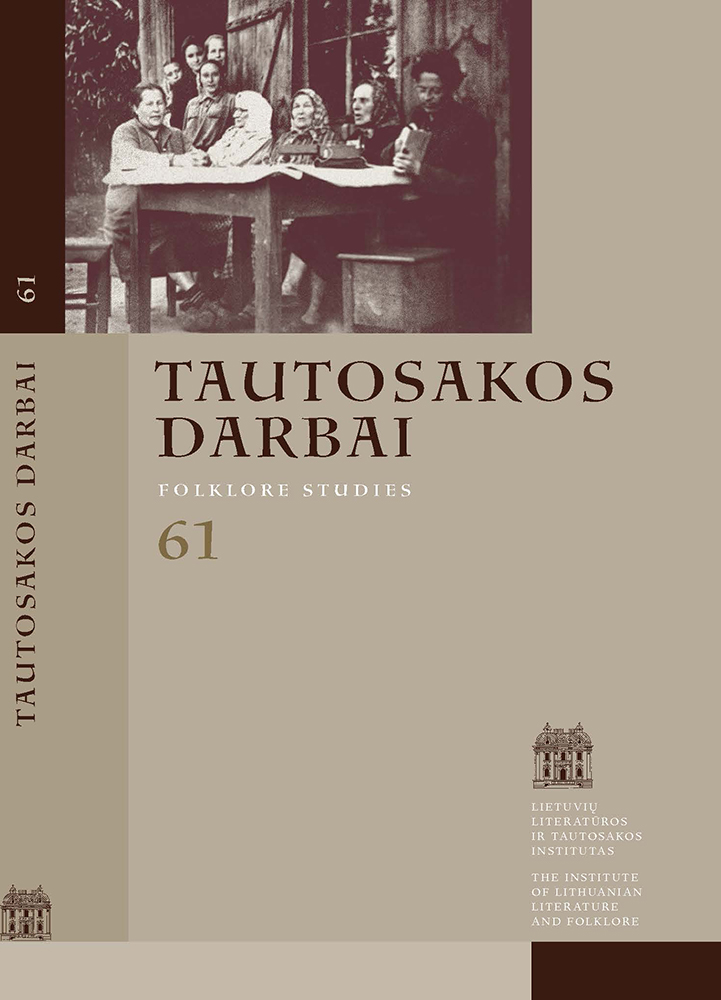Liaudies dainos kanoninė samprata: nuo XVIII a. iki šių dienų
Santrauka
Nacionalinio atgimimo priešaušryje lietuviams savigarbos ir lygiavertiškumo pirmaujančioms Europos tautoms argumentu tapo tradicinės dainos, kurios pripažintos mažaraščių žemdirbių pasaulėžiūros, moralės, vertybių atspindžiu. Folkloristai siekė surinkti ir išsaugoti žodinį paveldą mokslui ir ateities kartoms bei parodyti pasauliui ir lietuviškai visuomenei vertingiausiąją lietuviškos tradicijos dalį. Buvo suformuotas kanoninis tradicinės dainos įvaizdis, kurio pagrindiniai bruožai: liaudiška kilmė, lyrinė forma, tampri sąsaja su žemdirbių gyvensena, gamtiška pasaulėjauta, aukštas meniškumas ir aukšti moraliniai standartai. Per visą folkloristikos mokslo formavimosi ir plėtojimosi laiką didelė dalis dainuojamosios tradicijos, kuri vienu ar kitu požiūriu neatitiko šio kanono, negrįžtamai slydo folkloristams pro pirštus. Dainos įvaizdis buvo (ir iš dalies iki šiol yra) derinamas prie liaudies dainos misijos – atspindėti tautos dvasią. Straipsnyje siekiama atskleisti šį liaudies dainos kanono formavimąsi moksliniame diskurse, jo įtaką viešajam dainos gyvenimui, folklorizmo judėjimui.
Atsisiuntimai
Skaitomiausi šio autoriaus(ų) straipsniai
- Jurga Sadauskienė, Žmonės ir gyvūnai lietuvių pasakose: didaktiniai ir psichologiniai aspektai , Tautosakos darbai: T 56 (2018)
- Jurga Sadauskienė, Austė Nakienė, Rytis Ambrazevičius, Asta Skujytė-Razmienė, Radvilė Racėnaitė, Gražina Kadžytė, Modesta Liugaitė-Černiauskienė, Vita Džekčioriūtė-Medeišienė, Eligija Garšvienė, Kronika , Tautosakos darbai: T 54 (2017)
- Greta Paskočiumaitė, Austė Nakienė, Bronė Stundžienė, Jurga Sadauskienė, Kronika , Tautosakos darbai: T 62 (2021)
- Jurga Sadauskienė, Viktorija Daujotytė. Iš Bileišių vasarų, parengė Jurga Sadauskienė, Kaunas: Prigimtinės kultūros institutas , Tautosakos darbai: T 59 (2020)
- Jurga Sadauskienė, Emocijos kaip objektas lietuvių dainų tyrinėjimuose , Tautosakos darbai: T 48 (2014)
- Jurga Sadauskienė, Donatas Sauka (1929.X.13 – 2015.V.16) , Tautosakos darbai: T 49 (2015)
- Jurga Sadauskienė , Pratarmė , Tautosakos darbai: T 51 (2016)
- Jurga Sadauskienė, Prasmingi sugrįžimai , Tautosakos darbai: T 57 (2019)
- Jurga Sadauskienė, Kur du stos... Akademiką Leonardą Sauką ir dr. Konstantą Aleksyną kalbina dr. Jurga Sadauskienė , Tautosakos darbai: T 51 (2016)
- Jurga Sadauskienė, Žvelgiantis į atminties atodangas , Tautosakos darbai: T 61 (2021)
